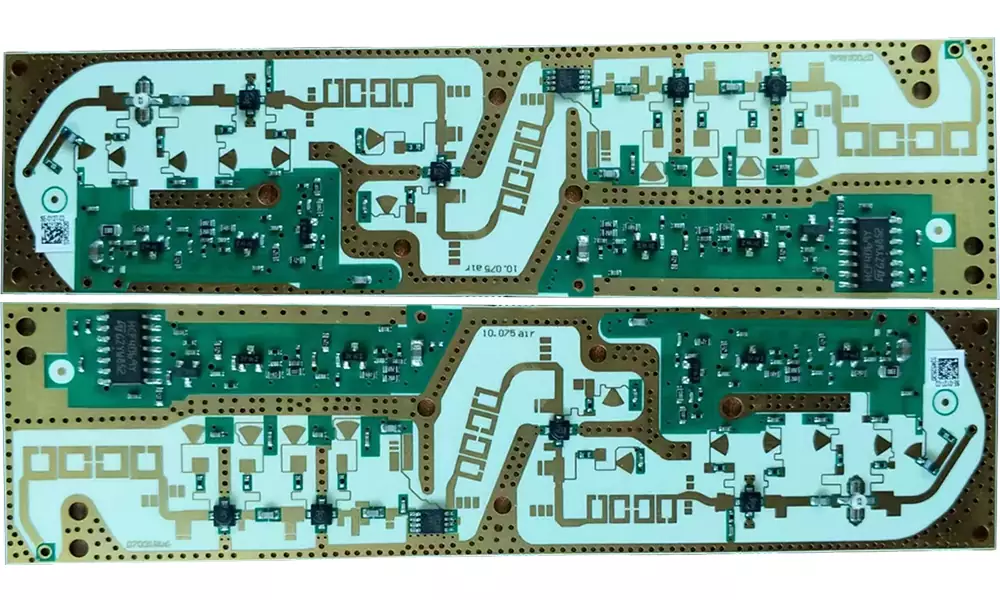Radio Frequency (RF) and microwave are two specific frequency ranges of electromagnetic waves. They are similar in many ways. So what is the difference between RF and microwave?
Frequency range of RF vs. microwave
RF: RF waves usually cover a frequency range from a few thousand Hertz (kHz) to several gigahertz (GHz). This includes AM and FM broadcasting, radio communications, wireless local area networks (Wi-Fi), Bluetooth, etc. RF waves have lower frequencies and longer wavelengths.
Microwave: The microwave band usually refers to the frequency range between 1 gigahertz (GHz) and 300 gigahertz (GHz). Microwaves are usually used in high-frequency applications such as radar, satellite communications, microwave ovens, and radio beam transmission. The microwave band has a higher frequency and a shorter wavelength.
Wavelength of RF vs. microwave
RF: The wavelength of RF waves is usually greater than 1 meter, which enables them to bypass some objects and obstructions when propagating, and is suitable for long-distance communication.
Microwave: The wavelength of the microwave band is usually between 1 mm and 1 m, and the wavelength is shorter, so they are more susceptible to obstruction by obstacles and atmospheric absorption, and are suitable for high-frequency communication and precision measurement over shorter distances.
Application of RF vs. Microwave
RF: RF technology is widely used in broadcast television, AM and FM broadcasting, mobile phone communications, short-range communications (such as NFC), and RF identification (RFID).
Microwave: Microwave technology is widely used in high-frequency applications such as radar systems, satellite communications, microwave communications, microwave ovens, astronomical observations, and microwave data links. The high frequency of microwaves gives it an advantage in high-precision measurement and data transmission.
Propagation characteristics of RF vs. Microwave
RF: RF signals are generally less absorbed and scattered when propagating in the atmosphere, so they can propagate over longer distances. This makes RF communication very effective in long-distance communication.
Microwave: Microwave signals are susceptible to absorption and scattering in the atmosphere, which leads to their propagation within the atmospheric transparent window, but is interfered with in other frequency ranges. This also limits the transmission distance of microwave communications.
Both RF and microwave are electromagnetic waves, and their main differences are frequency range, wavelength, application field, and propagation characteristics. These differences make them suitable for different types of communication and application requirements. RF and microwave technology involves a variety of different types of components that are used to generate, transmit, receive, and process RF microwave signals.

Common RF Microwave Components
RF Antennas: RF antennas are used to transmit and receive RF signals. They come in a variety of shapes and types, including dipole antennas, monopole antennas, directional antennas, scanning antennas, etc.
RF Amplifiers: RF amplifiers are used to increase the amplitude of RF signals. They can be amplifier modules, transistor amplifiers, power amplifiers, etc.
RF Filters: RF filters are used to selectively pass or reject signals within a specific frequency range. They are of types such as bandpass filters, bandstop filters, etc.
RF Mixers: RF mixers are used to mix two or more signals of different frequencies together to produce new frequency components. This is useful in spectrum analysis and frequency conversion.
RF Switches: RF switches are used to switch signal paths in a circuit to achieve connection and disconnection. They are often used for switching and control of RF front-end modules.
RF Power Dividers and Couplers: These components are used to distribute RF signals to multiple paths or merge signals from multiple paths.
RF modulator and demodulator: RF modulator is used to modulate baseband signal onto RF carrier, while RF demodulator is used to extract baseband signal from RF signal.
RF oscillator: RF oscillator is used to generate stable RF signal, usually used as clock signal or local oscillator in transmission and reception.
RF transmission line: This includes microstrip line, coaxial cable, waveguide, etc., which are used to transmit RF signal from one place to another.
RF integrated circuit (RFIC): RFIC is an integrated circuit specially designed for RF applications, including RF amplifiers, mixers, filters and other functions.
These components play a key role in RF and microwave systems, and they usually need precise design and adjustment to ensure excellent system performance. Different applications require different types of components to meet the specific requirements of RF and microwave components.